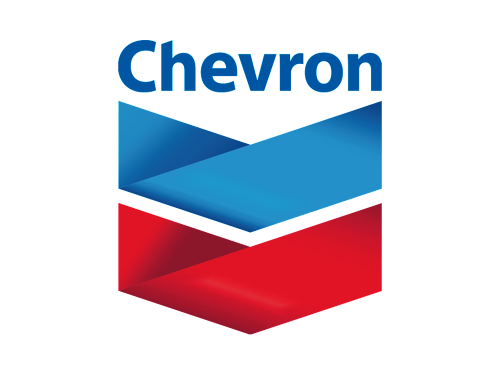Server virtualization is the process of configuring a physical server to host multiple virtual servers known as virtual machines or VMs. It abstracts the hardware resources and enables each VM to operate independently. Virtual machines are not reliant on their host servers and can be moved to other physical servers.
What are Dedicated Servers?
Virtualized servers contrast to dedicated servers (also known as bare metal servers) in which the entire physical server is allocated to a single application.
An application hosted on a bare metal server can gain unlimited access to resources like CPU, RAM, diskspace, and bandwidth. Under normal circumstances, this typically uses around 15% of the resources designated for the hardware resulting in stranded capacity and wasted resources.
Applications running on dedicated servers can be difficult to move between devices. In recent years, many servers have been virtualized to maximize the utilization of existing resources and increase energy efficiency.
What are Hypervisors and Virtual Environments?
Virtualized servers rely on a kind of software called a hypervisor to create multiple virtualized instances, known as guest virtual machines, on a single server, known as the host machine.
Guest and host are metaphorical titles used to more easily understand how the virtual server instance interacts with the hardware it’s using. One host can have many guests, just as one physical server can hold many virtual server instances. Host servers “quarantine” each guest machine in a hypothetical “room.” This “room” includes distinct operating systems and virtual hardware that ensures that no guest knows about any other guest machines. This way the guest applications can function like any other application that operates on a normal, physical computer. This reduces the complexity of these servers by removing any need for situation-dependent calls to the shifting resources shared by many virtual machines on one piece of hardware.
Put another way, the virtualized hardware is a layer of abstraction. As far as the virtualized servers know, they are operating on dedicated physical equipment. The hypervisor is responsible for this trick, generating a virtualized environment that maps the virtualized server’s calls for dedicated physical resources to the actual available assets in the shared server. This layer of separation is important, as it ensures that clients’ data and systems remain separate and secure. Non-mission-critical applications are often the best apps to begin virtualizing, in case of complications with the hypervisor or virtual operating system.
This virtualized configuration maximizes a data center’s resources, making the most of operating expenditures and existing systems, while also preventing capital expenditures on servers and larger facilities.
What Are the Types of Virtual Environments?
There are three types of virtual environments:
- Full virtualization. At the full virtualization level, virtual machines are entirely isolated from each other and directed to operate as if in a bare metal, traditional server environment.
- Paravirtual machine model. In a paravirtual model, the hypervisor and the virtual machines are designed and directed to communicate through messages called hypercalls. Fully virtual hypervisor software can be modified using an API to send and receive these hypercalls. These communications are used to enhance the operating systems’ stability and performance.
- OS level virtualization. Operating system level virtualization uses containers rather than virtual machines to silo applications. Because containers don’t require a virtualized operating system or virtualized hardware to launch, they tend to be faster and more lightweight than virtual machines.
What Are the Advantages of Server Virtualization?
Server virtualization offers several advantages that make it popular and widely adopted today, including:
- Resource utilization. One physical server can now perform the functions of many.
- Cost savings. The need for fewer physical servers results in reduced hardware procurement and maintenance costs and less space, power, and cooling costs.
- Flexibility and scalability. Virtual machines can be quickly and easily be created and deployed and resources can be allocated based on demand for seamless scalability and adaptability to changing workloads.
- Security. Every virtual machine operates in an isolated environment, ensuring that applications and data are compartmentalized and protected from unauthorized access.
- Backups. Snapshot and backup features allow administrators to capture the state of a virtual machine at a specific point in time to be used for data protection, recovery, and testing.
- Disaster recovery. Virtual machines can easily be migrated between physical servers, enabling fast disaster recovery and high availability.
- Testing and development. Virtualization provides a sandbox environment that allows developers to experiment with different configurations and software without affecting production systems.
On the other hand, some disadvantages should be considered such as virtual machines contending for the same resources which can lead to performance issues, complex deployments that require proper planning, configuration, and monitoring, and virtualization software licensing costs.
Improve Virtual Machine Management with DCIM Software
Data Center Infrastructure Management (DCIM) software can be used to automate virtual machine management and increase the energy efficiency of your virtualized environment.
Modern DCIM software provides a VMware connector out-of-the-box that enables you to register for “events” such as new cluster, host, or VM being deployed, and that information can be automatically populated into your DCIM software so you can map which physical machines a VM is running on.
You can also integrate DCIM with VMware Cloud, including vSphere on AWS and across hybrid clouds, to gain insight to VMs in public and private clouds as well as in on-premises data centers. You can search by asset name, type, or status using either the DCIM or VMware hierarchy. And if you are going to take a system down to perform maintenance, you can know exactly which VMs are on that host.
Plus, by knowing which physical servers your VMs are running on, you can use this information to move your VMs to the most energy efficient servers to reduce your energy consumption and support corporate sustainability initiatives.
Want to see how Sunbird’s leading DCIM software enhances server virtualization? Get your free test drive today!




























